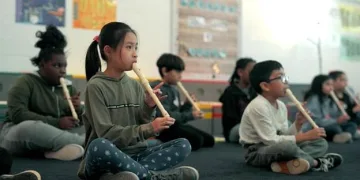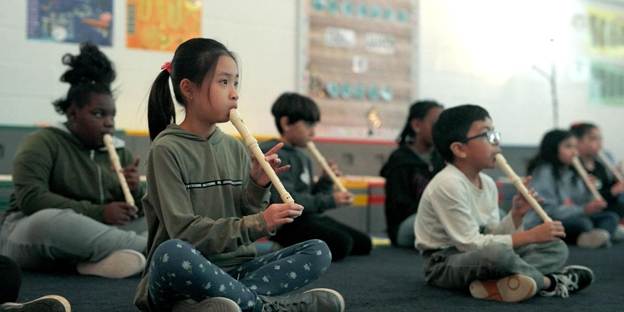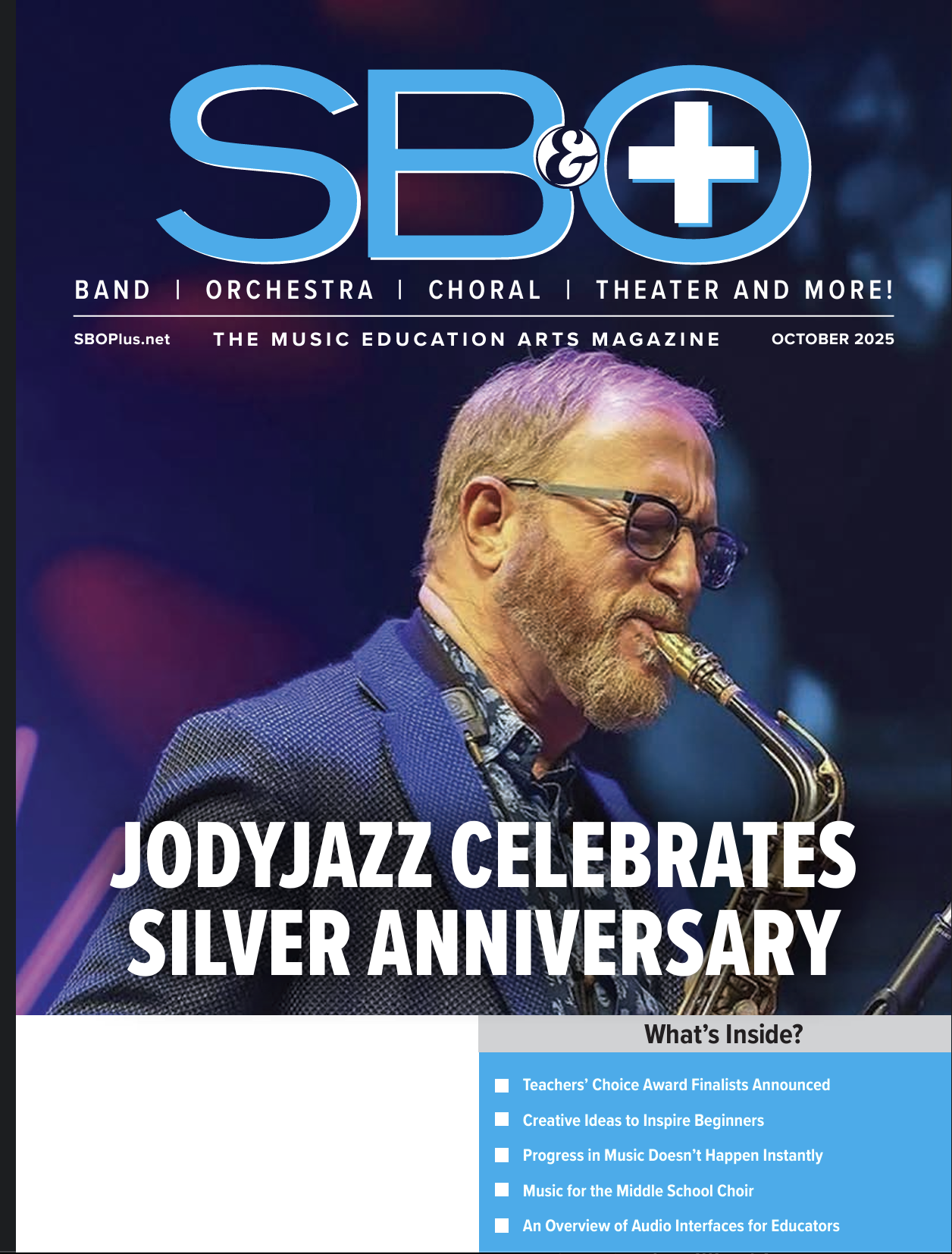By Kim Bruguier
Recruiting students into beginning band is one of the most important, and often most challenging, responsibilities of a secondary band director. The success of a band program depends heavily on a steady influx of new, enthusiastic, and well-informed students. While many directors work hard to create appealing programs and conduct instrument demos, a crucial resource is sometimes overlooked: the elementary general music teacher. These educators are not only colleagues in the music department, but they are also front-line influencers who can spark a love of music and serve as powerful allies in building your future band program.
Let’s explore practical strategies for how middle and high school band directors can form meaningful, effective partnerships with elementary music teachers to enhance beginning band recruitment.
Build a Collaborative Relationship
Before launching any recruitment effort, it’s vital to build a solid professional relationship with the elementary music teachers in your district.
– Start with communication: Reach out early in the school year or summer. Offer to meet for coffee or lunch or simply stop by their classroom to introduce yourself and express appreciation for their work. Develop a rapport with them.
– Show respect for their expertise: Elementary music teachers have unique insights into students’ musical abilities, learning styles, and interests. Acknowledge their role as a foundational part of your students’ musical journey. Many have known these students 4–6 years by the time you are transitioning them to your classroom or school.
– Involve them in planning: Ask for their input when scheduling recruitment events, instrument trials, or assemblies. Collaborating from the start fosters a sense of shared mission and lets them know you value their opinion.
Coordinate Musical Language and Curriculum
One of the best ways to ease the transition from general music to instrumental music is to align musical concepts and terminology between programs.
– Teach complementary skills: Coordinate curriculum so students enter beginning band already familiar with concepts like steady beat, pitch discrimination, note reading, and musical form.
– Use consistent vocabulary: If the elementary teacher uses Kodály hand signs or specific rhythmic syllables, incorporate those into your beginner band warm-ups or rhythm exercises, even if the goal is to eventually transition them into the method you use in your program. SBO+: I observed a 6th grade band teacher where the elementary students were very proficient in using “tah and ti” to perform rhythms but he insisted they use numbers from the first day with no explanation of how they related.
– Discuss readiness benchmarks: Work together to identify signs of musical readiness — attention span, rhythmic coordination, pitch-matching ability — so recruitment can be targeted effectively. If the elementary program uses recorders, what was their ability to pick up on new notes, fingerings, tone?
Plan Joint Musical Experiences
Creating connections between students and directors across grade levels can foster excitement and anticipation about joining band.
– Host a “Meet the Band” day: Bring middle or high school band students to perform in the elementary school. Include instrument demos, solos, or a short, engaging concert. Our high school jazz band plays first for the students, so they get to see them in action and get the excitement going.
– Feature an “Instrument Petting Zoo”: Let younger students try out real instruments under the supervision of older students or directors. This hands-on experience can be the tipping point for students unsure about joining band. One successful way I do this in my general music classroom is with 3D printed mouthpieces for trumpet, trombone, and flute mouthpieces so when my younger (e.g., 1st grade) students are learning about the instruments of the orchestra they can learn how to buzz on a mouthpiece. For the flute mouthpiece, I usually wait until 2nd or 3rd grade to let them experiment with how to make sound. While I have done reed mouthpieces in the past, with ponytail holders to keep the reeds in place, I have found it is not as cost effective. SBO+: Several manufacturers are addressing this need. Try clicking here, and here (no endorsement by NAfME of SBO+ implied).
– Include elementary students in concerts: Invite a local elementary class to sing a song with the middle or high school band at a concert. This gives younger students a positive, memorable introduction to the ensemble world. We invite our 5th-grade students to join the middle school band students at a home football game to all sit on the sideline of the football field and get “front row seats” for the marching band. The look on their faces will be priceless!
Empower the Elementary Teacher as a Recruiter
Elementary music teachers have regular, trusted contact with every student in the school. They are in a powerful position to guide students toward band.
– Provide recruitment materials: Give them brochures, posters, or videos that explain what beginning band is, what to expect, and how to sign up. Pictures of students playing instruments, performing together, and having fun can spark excitement among the elementary students and make it easier for them to imagine joining band.
– Offer talking points: Share key benefits of participating in band — such as improved academic performance, teamwork, and self-discipline — so they can speak confidently to students and families.
– Share success stories: Provide stories or videos of older students who have excelled in band. Elementary teachers can share these during music classes to inspire their students. Shorter is better. Make a YouTube playlist of 30-second messages to the elementary students encouraging them to try band. Elementary teachers can use them at the start of class.
Involve Families Early and Often
Recruitment doesn’t stop with the student — it includes families, too. Elementary music teachers are quite often the first point of contact between the music department and parents.
– Present at school events: Ask to set up a band booth or do a short presentation at open houses, family nights, or PTA meetings at the elementary level.
– Collaborate on parent communication: Work with the elementary teacher to send home joint letters, videos, or newsletters explaining the band program, instrument rental process, and benefits of participation.
– Demystify the process: Many families are unfamiliar with how band works. Create simple, multilingual materials that explain costs, schedules, and what support is available for students who may need it. Make sure the elementary teacher has access to this throughout the year for new families that may move in.
Offer Professional Support and Appreciation
Elementary music teachers often work in isolation with limited resources. Band directors can support their efforts and build goodwill in several meaningful ways:
– Invite them to rehearsals or festivals: Let them see where their students are headed. It can be incredibly motivating for an elementary teacher to see their former students succeeding in advanced ensembles.
– Celebrate their contributions: Recognize the elementary music teacher publicly during concerts or in newsletters. Let families and students know how important their early musical training is.
Sustain the Connection Throughout the Year
Recruitment is not a one-time event. Maintaining a strong partnership with the elementary music teacher should be an ongoing priority.
– Check in regularly: Even a brief email or visit can go a long way in maintaining communication. Set an alarm on your phone if you need to. Aim for monthly check-ins at a minimum.
– Share updates: Let them know how their former students are doing in band — highlight students who are excelling or have earned honors. They genuinely want to know!
– Involve them in reflection: After the recruitment season ends, ask for feedback. What worked well? What could be improved? Their perspective can help refine your approach next year.
A Strong Program Starts with a Strong Team
When middle and high school band directors actively partner with elementary music teachers, the entire music program benefits. Students are better prepared and more enthusiastic. Families are better informed and more engaged. This collaboration not only helps with recruitment, but it also fosters a culture of continuity, support, and mutual respect within your district’s music education department. In the end, that kind of teamwork doesn’t just fill your band room — it transforms the future of music education in your school district.
Kim Bruguier teaches elementary general music and beginning band at LB Williams Elementary in Mitchell, SD. She also directs a middle school show choir and is color guard instructor for the High School Marching Band.





























